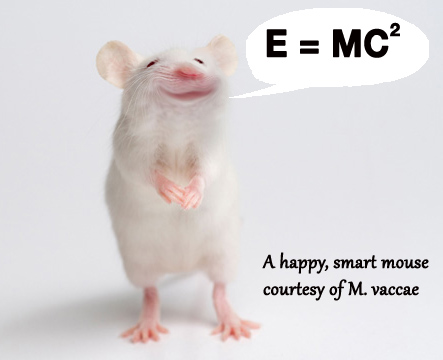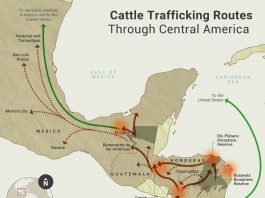A few weeks ago I wrote an article about moving newly-arrived and unsocialized cattle around in our handling facility. There was a little video showing some of those cattle too. Along with some interesting comments, we got some questions from people who noticed that some of those cattle had numbers or letters spray-painted on their sides, and they also had funny little yellow stickers on them.
“What’s up with all that artwork?”
Well, turns out, moving livestock through an auction yard and transferring ownership from one person to another is a sort of complicated process. It includes tags, glue, paint and paperwork.
Here’s How it Works (in Oregon)
Different regions of the country have different rules, laws and customs. This explanation fits for Oregon and other Western states.
As you prepare to unload your livestock, you should provide the yardman with a Transportation Slip. This paper has critical details about yourself and the animals. In return, they should give you a receipt that shows how many head you delivered, the date, and perhaps a few details about the animals.

Next, the cattle go to an alley way or a chute where the State Brand Inspector looks them over. (Most states east of the Mississippi don’t have brands or brand inspection at all, and inspection of animals as they arrive is done by facility staff.) She will look for your brand (if you have one) color of the cow, and perhaps also make note of all secondary brands or other identifying information. If you are a suspicious character, there is a whole range of data she might enter into a hand-held computer. Freeze brands? Tattoos? Ear tags? Tag color and number, and which ear? Ear notches? Waddles? Horns? Spots or stripes? All of this data helps make sure the rightful owner is actually selling the cow.
At the same time as the Brand Inspector is completing her work, a livestock auction employee will attach a new temporary ID to the animal: a sticky “Back Tag”. This is a very durable plastic/paper oval that is applied with a liberal slathering of glue. The Back Tag numbers are recorded and linked to the Transportation Slip. Basically, this is how you get paid, and it allows the Auction Yard to track individual animals as they move through the sale, all the way to load-out at the end of the day. In my experience, these tags typically stay on the animal for at least a week, often a month or more, unless I remove them when they arrive at the ranch.

Tags are placed to help buyers quickly identify the sex and age of animals.
Steers: tag goes on the shoulder
Heifers: tag goes on the hip
Cows and Bulls: tag goes high on the mid-ribs
Occasionally you will see a blank, chartreuse sticky tag added beside the regular back tag. This is a cow from a certified organic outfit. She will go to an organic buyer.
Preg Testing
After tagging and brand inspection, some adult cows go to the pregnancy testing chute. This is a voluntary practice, paid for by the cow owner. The auction yard typically has a veterinarian on site who will perform the preg test, and the data he discovers is painted right onto the cow. Some auctions use chalk for this, but more common is spray paint designed for marking logs, trees, or even special cow paint. Colors can vary, and the yard should provide several colors so there can be nice contrast on different hair colors. The point of this entire exercise is to make it possible for the cow owner and the auction yard to communicate clearly to the buyers as to exactly what they are bidding on. It is also, in my opinion, very basic marketing. The cost is typically around $10 per head.
During the preg test, the vet will call out some basic information to whomever is doing the painting. Most important is the number of months the cow is pregnant. Of course, she may not be pregnant at all, in which case the vet will pronounce her “open” and she will get a big O painted on her upper hip. If the vet pronounces her three months pregnant, she gets a 3, and so on. Some vets get a little fancier, calling out half-months, as in “Boys, she’s three and a half, so mark her 3+.” Occasionally, a vet will call one 9+, which means if you buy her you better drive fast on your way back to the ranch.
Veterinarians are humans, and on occasion some of them like to show off. Sometimes a vet will find something interesting, so instead of a numeral for months pregnant, the vet will ask that the cow be marked with a special symbol, so everyone knows what’s wrong with her. Usually, this symbol is placed next to the O for “Open”, or perhaps simply in place of the O. Here are some examples:
M = Mummy. This cow has a long-dead calf inside of her.
O = Non-breeder, based on the vet’s palpation.
H = Hermaphrodite
F = Freemartin
Cow Mouthing
In addition to checking for degree of pregnancy, many yards also have the vet open the cow’s mouth and look at her teeth. An experienced technician can judge a cow’s age pretty closely from years one through four or five. So, a young cow may wind up with a large numeral painted on her side or shoulder, indicating the best guess at her age (in years). This is based on the visual appraisal of the teeth.
More commonly, the person at the head gate will “mug” the cow, expose her teeth, and call out his findings to the painter man:
“Full!”: this means she is a “full mouth” cow, meaning she has all her teeth, so the buyer should expect many more years of service from this cow. She gets a big F on her shoulder.
“Broken!”: this means she is missing at least one incisor, maybe more. Buyers need to make a calculated guess as to how much longer this cow will be effective in their herd. She gets a big B on her shoulder.
“Gummer!”: this tells everyone that this cow has virtually no functional incisors, and she probably has a limited career in front of her. She gets a big G on her shoulder.
Some muggers also use the terms “Short” or “Spread”. These are cows who have retained all of their teeth, but have worn them down significantly or their teeth have begun drifting apart. Both of these indicate old age. To me, these cows are the same as broken mouth cows: limited career ahead. Short or Spread cows get a big S on their shoulder.
One final bit of information that is vitally important to buyers in some states has to do with Brucellosis, also known as “Bangs” disease. This is a long and complicated topic, but if a cow has been vaccinated for Brucellosis, she is generally allowed to easily travel across state lines. These cows have a special metal ear tag and a tattoo, and they get a big V painted on their side.
Pop Quiz!
A note from your cow-buyer friend: the information painted on each cow is only a small piece of the visual evaluation of every cow that comes into the ring. In fact, reading paint is the most basic part of the process. Decisions about cow value needs to be accomplished in about 15 seconds, so you might want to brush up on your (paint) speed-reading skills.
Here’s a chance to test your skills!
1)

2)

3)

4)
This one tries to lick the ring man!

5)

Click here to check your answers and read more about what I think about when I decide whether to purchase one of these animals and how much I might pay.





Thank you for this easy-to-understand explanation.
Comments are closed.